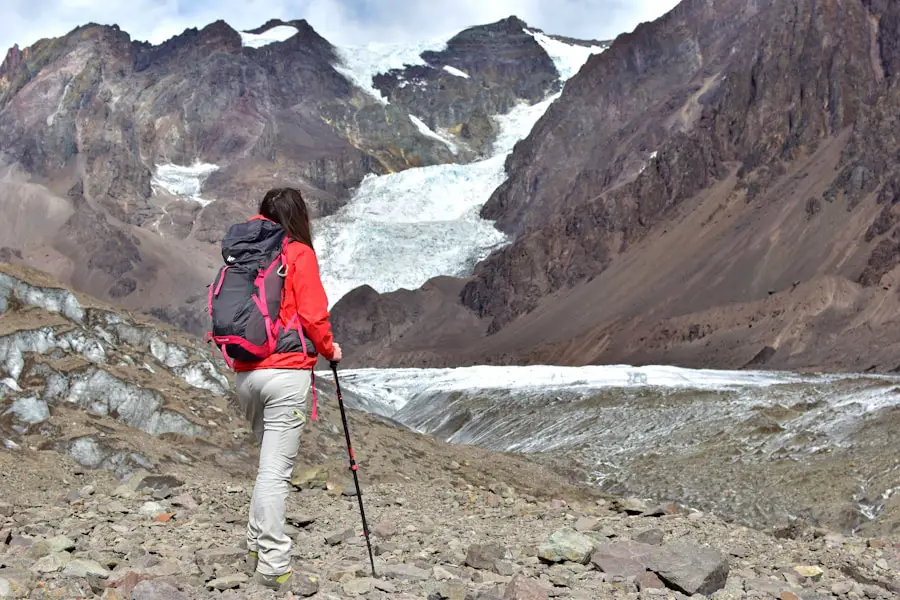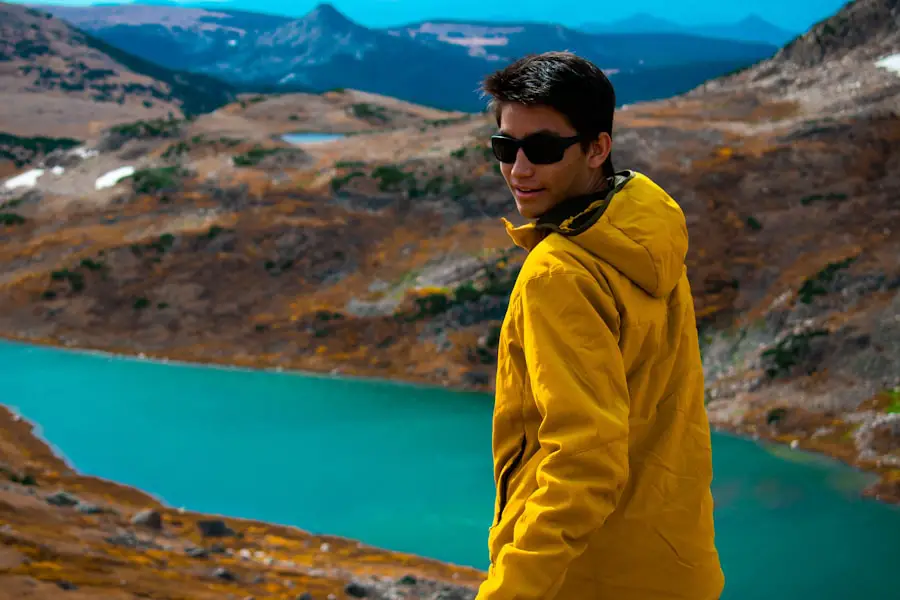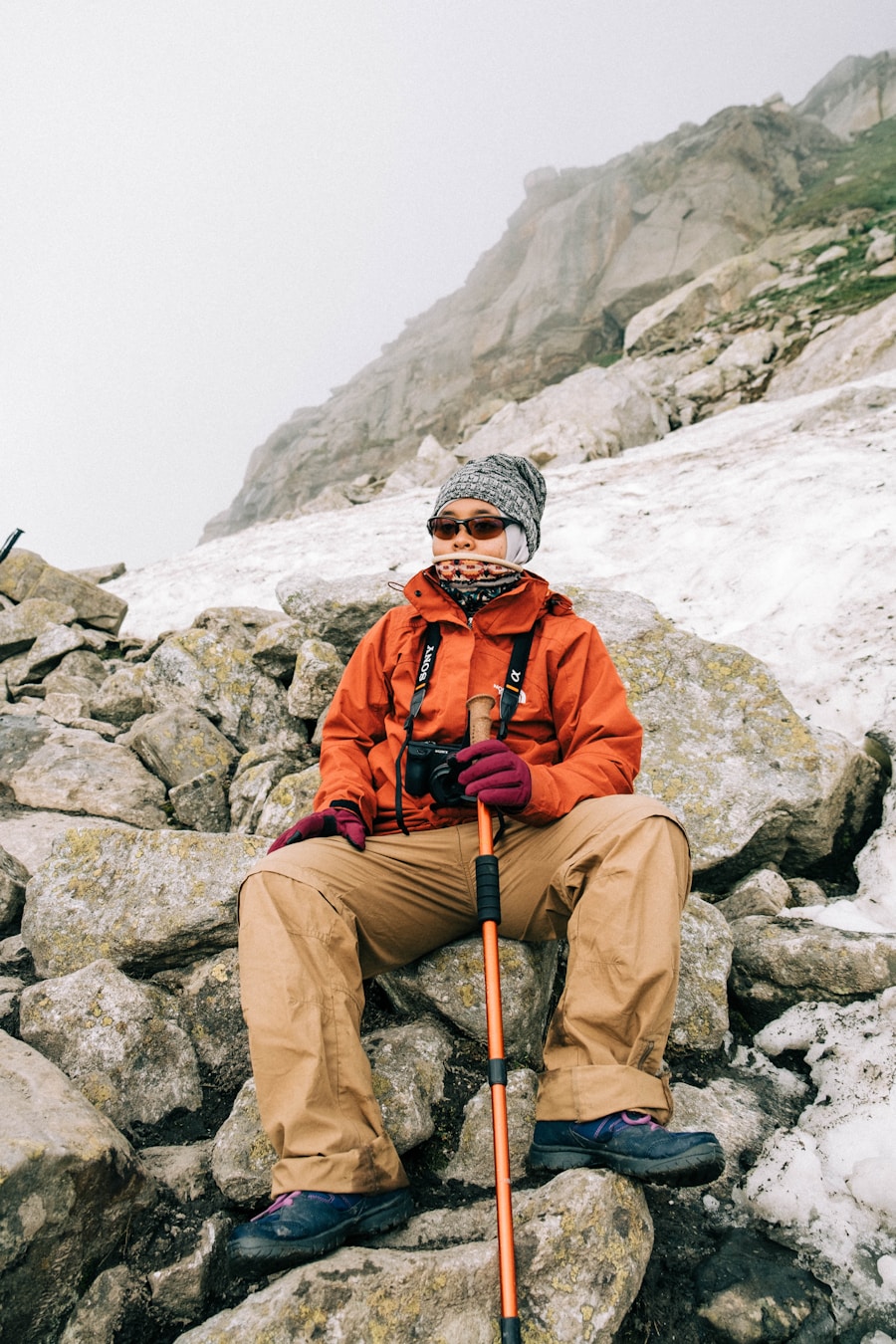When venturing into the diverse and often unpredictable climate of Alaska, understanding the art of layering is paramount. The layering system consists of three primary layers: the base layer, the insulating layer, and the outer layer. Each layer serves a distinct purpose, allowing hikers to adapt to changing weather conditions while maintaining comfort and mobility.
The base layer, typically made from moisture-wicking materials such as merino wool or synthetic fabrics, is designed to keep sweat away from the skin. This is crucial in Alaska, where temperatures can fluctuate dramatically, and staying dry is essential to prevent hypothermia. The insulating layer, often composed of fleece or down, provides warmth by trapping body heat.
In Alaska’s colder regions, this layer can be the difference between a comfortable hike and a chilling experience. It’s important to choose insulation that is lightweight yet effective, as bulky layers can restrict movement and become cumbersome during strenuous activities. The outer layer, usually a waterproof and windproof shell, protects against the elements.
This layer should be breathable to allow moisture from sweat to escape while keeping rain and wind at bay. By mastering the layering technique, hikers can effectively manage their body temperature and remain comfortable throughout their journey in Alaska’s rugged wilderness.
Key Takeaways
- Layering is essential for hiking in Alaska to stay comfortable and protected from the elements.
- Choose footwear that is suitable for the terrain, such as waterproof boots for wet conditions or sturdy hiking shoes for rocky terrain.
- Protect yourself from the sun by wearing a wide-brimmed hat, sunglasses, and applying sunscreen regularly.
- Be prepared for rain and wind by bringing waterproof and windproof gear, such as a rain jacket and pants.
- Consider backpack and gear carrying options, such as a comfortable and adjustable backpack with proper weight distribution.
Footwear for the Terrain
Selecting the right footwear is critical for navigating Alaska’s varied terrain, which ranges from rocky trails to muddy paths and snow-covered landscapes. Hiking boots should provide ample support and traction, as well as protection against the elements. A sturdy pair of waterproof boots is essential for keeping feet dry during river crossings or when traversing wet ground.
Look for boots with a high ankle design to offer additional support and stability on uneven surfaces.
Vibram soles are often recommended for their superior grip on slippery or rocky terrain, ensuring that hikers can maintain their footing even in challenging conditions. In addition to traditional hiking boots, some hikers may opt for specialized footwear such as crampons or snowshoes when traversing icy or snowy areas.Crampons attach to boots and provide spikes that dig into ice, enhancing traction significantly. Snowshoes distribute weight over a larger surface area, preventing hikers from sinking into deep snow. It’s also wise to consider the type of socks worn with hiking boots; moisture-wicking and cushioned socks can prevent blisters and keep feet comfortable over long distances.
Ultimately, investing in high-quality footwear tailored to the specific conditions of Alaska will enhance safety and enjoyment during hikes.
Protection from the Sun

While Alaska is often associated with cold temperatures and rugged landscapes, sun protection is equally important for hikers exploring its vast wilderness. The sun’s rays can be particularly intense at higher altitudes and during summer months when daylight hours are extended. A broad-spectrum sunscreen with an SPF of at least 30 should be applied generously to all exposed skin, including areas often overlooked such as the ears and back of the neck.
Reapplication every two hours, or more frequently if sweating heavily or swimming, is crucial to ensure continued protection. In addition to sunscreen, wearing protective clothing can significantly reduce sun exposure. Lightweight long-sleeved shirts made from breathable fabrics can shield the skin while keeping the body cool.
A wide-brimmed hat not only provides shade for the face but also protects the neck from harmful UV rays. Sunglasses with UV protection are essential for safeguarding the eyes from glare, especially when reflecting off water or snow. By combining these protective measures, hikers can enjoy their Alaskan adventures without the risk of sunburn or long-term skin damage.
Rain and Wind Gear
| Product | Waterproof Rating | Breathability Rating | Windproof Rating |
|---|---|---|---|
| Rain Jacket | 10,000mm | 10,000g | Yes |
| Rain Pants | 15,000mm | 12,000g | Yes |
| Windbreaker | 5,000mm | 8,000g | Yes |
Alaska’s weather can change rapidly, making it essential for hikers to be prepared for rain and wind at any moment. A high-quality waterproof jacket is a must-have item in any hiker’s gear collection. Look for jackets made from breathable materials such as Gore-Tex or similar fabrics that offer both waterproofing and ventilation.
Features like adjustable hoods, cuffs, and hemlines can help seal out wind and rain while allowing for a customizable fit that accommodates layering underneath. In addition to jackets, waterproof pants are also advisable for those planning extended hikes in potentially wet conditions. These pants should be lightweight yet durable enough to withstand rough terrain while providing adequate protection against rain and wind.
Gaiters can be an excellent addition to keep water and debris from entering boots during muddy or rainy hikes. By investing in quality rain and wind gear, hikers can remain dry and comfortable, allowing them to focus on the breathtaking scenery rather than battling the elements.
Backpack and Gear Carrying Options
Choosing the right backpack is crucial for any hiking expedition in Alaska, where carrying gear efficiently can make a significant difference in comfort and performance. A well-fitted backpack should distribute weight evenly across the body, reducing strain on the back and shoulders during long treks. Look for features such as padded shoulder straps, a hip belt for added support, and multiple compartments for organization.
A hydration reservoir or water bottle pockets are also beneficial for easy access to hydration on the go. The size of the backpack will depend on the length of the hike; day hikes typically require a smaller pack (20-30 liters), while multi-day excursions necessitate larger packs (50-70 liters) that can accommodate camping gear and food supplies. Additionally, consider backpacks with external attachment points for trekking poles or sleeping bags, which can help free up internal space.
Ultimately, selecting a backpack that meets individual needs will enhance overall hiking experience by ensuring that all necessary gear is easily accessible and comfortably carried.
Navigation and Safety Essentials

Navigating Alaska’s vast wilderness requires more than just a sense of adventure; it demands reliable navigation tools and safety essentials to ensure a successful outing. A topographic map of the area is invaluable for understanding terrain features and planning routes effectively. While GPS devices are popular for their convenience, they should not replace traditional navigation methods; battery life can be an issue in remote areas where charging options are limited.
Carrying a compass alongside a map allows hikers to orient themselves accurately even when technology fails. In addition to navigation tools, safety essentials such as a first aid kit are critical for addressing potential injuries on the trail. Kits should include items like adhesive bandages, antiseptic wipes, gauze pads, pain relievers, and any personal medications needed during hikes.
A whistle can also be an important safety tool; it serves as an effective means of signaling for help if lost or injured. Furthermore, carrying a multi-tool or knife can assist with various tasks ranging from food preparation to emergency repairs on gear. By prioritizing navigation and safety essentials, hikers can explore Alaska’s wilderness with confidence.
Hydration and Snack Supplies
Staying hydrated is vital during any hiking adventure, especially in Alaska where physical exertion combined with varying temperatures can lead to dehydration quickly. Carrying an adequate supply of water is essential; many hikers opt for hydration reservoirs that fit into their backpacks for easy access while on the move. Water purification tablets or filters are also recommended for those planning longer hikes where natural water sources may be utilized.
This ensures that even if water supplies run low, hikers have a safe method of replenishing their hydration needs. In addition to water, packing nutritious snacks is crucial for maintaining energy levels throughout the hike. High-energy foods such as trail mix, energy bars, jerky, or dried fruits provide quick fuel without taking up much space in a backpack.
It’s wise to pack snacks that are lightweight yet calorie-dense to sustain energy during long treks through Alaska’s rugged terrain. Planning snack breaks not only helps replenish energy but also offers an opportunity to enjoy the stunning surroundings while taking a moment to rest.
Other Essential Gear for Alaska Hiking
Beyond clothing and basic supplies, several other essential items can enhance the hiking experience in Alaska’s wilderness. Trekking poles are highly recommended for providing stability on uneven terrain; they help reduce strain on knees during descents and offer additional support when navigating steep inclines. Many hikers find that using poles improves balance and reduces fatigue over long distances.
A headlamp or flashlight is another critical piece of gear; daylight hours can be limited depending on the season, making it essential to have reliable lighting for early morning starts or late returns. Opting for LED lights ensures longer battery life while providing ample illumination for navigating trails after sunset. Additionally, packing a lightweight emergency blanket can provide warmth in case of unexpected weather changes or if someone becomes stranded.
Lastly, consider bringing along a camera or binoculars to capture Alaska’s breathtaking landscapes and wildlife encounters. The opportunity to observe animals such as moose or bears in their natural habitat adds an enriching element to any hiking experience. By equipping oneself with these additional essentials, hikers can fully immerse themselves in Alaska’s stunning wilderness while ensuring safety and comfort throughout their journey.
If you are planning a hiking trip in Alaska, it is important to consider the best time to visit. According to a seasonal guide on TakeTravelInfo, the summer months of June to August are ideal for hiking in Alaska due to the milder weather and longer daylight hours. Additionally, it is crucial to pack appropriate clothing and gear for your hike, as discussed in the article on what to wear hiking in Alaska.
FAQs
What should I wear for hiking in Alaska?
When hiking in Alaska, it is important to wear layers to stay warm and dry. Start with a moisture-wicking base layer, add an insulating layer, and finish with a waterproof and windproof outer layer. Don’t forget to wear sturdy hiking boots and wool socks to keep your feet warm and dry.
What type of clothing is best for hiking in Alaska?
Clothing made of synthetic or wool materials is best for hiking in Alaska. These materials wick moisture away from the body and provide insulation even when wet. Avoid cotton clothing, as it retains moisture and can lead to hypothermia in cold and wet conditions.
Do I need to wear a hat and gloves when hiking in Alaska?
Yes, wearing a hat and gloves is essential when hiking in Alaska. A hat will help retain body heat, while gloves will keep your hands warm and protect them from the cold and wind.
Should I wear sunscreen and sunglasses when hiking in Alaska?
Yes, it is important to wear sunscreen and sunglasses when hiking in Alaska, even on overcast days. The sun’s rays can still be strong, especially when reflecting off snow or water, and can cause sunburn and eye damage.
What type of footwear is recommended for hiking in Alaska?
Sturdy hiking boots with ankle support and good traction are recommended for hiking in Alaska. It is important to choose boots that are waterproof and insulated to protect your feet from cold and wet conditions.
